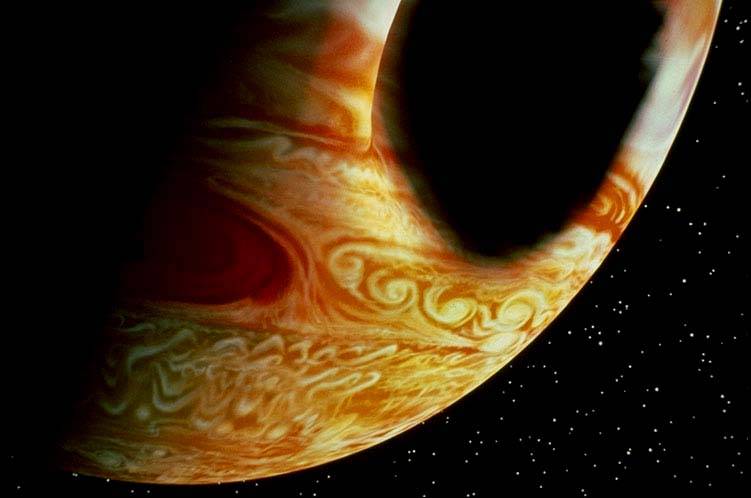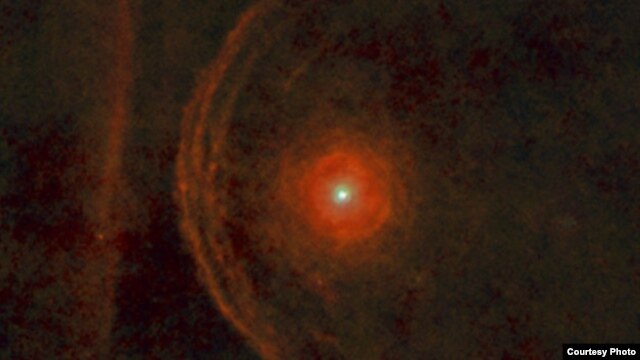Navigation
Install the app
How to install the app on iOS
Follow along with the video below to see how to install our site as a web app on your home screen.

Note: This feature currently requires accessing the site using the built-in Safari browser.
More options
You are using an out of date browser. It may not display this or other websites correctly.
You should upgrade or use an alternative browser.
You should upgrade or use an alternative browser.
Coming Soon: A second sun?
- Thread starter JBeukema
- Start date
Quantum Windbag
Gold Member
- May 9, 2010
- 58,308
- 5,099
- 245
The guy that wrote the article is an idiot. While a supernova is extremely bright, one 640 light years away will not appear like a sun to us, it will just be an extraordinarily bright star. Not to mention that to be a sun we would actually have to be in orbit around it.
That picture in Star Wars is nice, but it will not happen in this universe. Two stars close enough together to appears as discs from the surface of a planet would result in the larger one eventually swallowing the smaller one, and their would be streams of plasma indicating that the process is actively occurring. Any planet in the immediate vicinity would be uninhabitable.
That picture in Star Wars is nice, but it will not happen in this universe. Two stars close enough together to appears as discs from the surface of a planet would result in the larger one eventually swallowing the smaller one, and their would be streams of plasma indicating that the process is actively occurring. Any planet in the immediate vicinity would be uninhabitable.
Betelgeuse may or may not actually be there anymore, but I tend to doubt the predictions that we'll see the light from the supernova on any given date or even year. We just don't know enough to predict it with any sort of accuracy. It could be tomorrow...or in a thousand years, or ten thousand, or a hundred thousand, you get the idea. "Soon" in astronomical terms is a deceptive idea to human timeframes.
But if it does happen in my lifetime, it'll be odd to see Orion without it.
But if it does happen in my lifetime, it'll be odd to see Orion without it.
Nope........the best chance for us to have twin suns would be if Jupiter suddenly exploded. It's the only planet in the solar system that has the right kind of make up.
JBeukema
Rookie
- Thread starter
- Banned
- #7
The guy that wrote the article is an idiot. While a supernova is extremely bright, one 640 light years away will not appear like a sun to us, it will just be an extraordinarily bright star. Not to mention that to be a sun we would actually have to be in orbit around it.
That picture in Star Wars is nice, but it will not happen in this universe. Two stars close enough together to appears as discs from the surface of a planet would result in the larger one eventually swallowing the smaller one, and their would be streams of plasma indicating that the process is actively occurring. Any planet in the immediate vicinity would be uninhabitable.

However, if Betelguese blew up, it may end up showing up like the Star of Bethlehem did.
Quantum Windbag
Gold Member
- May 9, 2010
- 58,308
- 5,099
- 245
The guy that wrote the article is an idiot. While a supernova is extremely bright, one 640 light years away will not appear like a sun to us, it will just be an extraordinarily bright star. Not to mention that to be a sun we would actually have to be in orbit around it.
That picture in Star Wars is nice, but it will not happen in this universe. Two stars close enough together to appears as discs from the surface of a planet would result in the larger one eventually swallowing the smaller one, and their would be streams of plasma indicating that the process is actively occurring. Any planet in the immediate vicinity would be uninhabitable.
That's me.
R
rdean
Guest
OK, we have the left wing explanation.
What is the "right wing" explanation?
What is the "right wing" explanation?
OK, we have the left wing explanation.
What is the "right wing" explanation?
Uhhhh it's a Blue Giant, it is a lot bigger and a lot hotter than our own sun and it will explode in a supernova explosion.
Quantum Windbag
Gold Member
- May 9, 2010
- 58,308
- 5,099
- 245
OK, we have the left wing explanation.
What is the "right wing" explanation?
I gave the "right wing" explanation, it won't happen because it is physically impossible for anything as far away as Betelgeuse to appear as a disk in our sky.
daveman
Diamond Member
Nope........the best chance for us to have twin suns would be if Jupiter suddenly exploded. It's the only planet in the solar system that has the right kind of make up.
But it's not nearly massive enough.
...Jupiter would need to be about 75 times as massive to fuse hydrogen and become a star...
It'd need some help.

Mini 14
Senior Member
- Jun 6, 2010
- 3,947
- 583
- 48
I wish Betelgeuse WOULD explode in my lifetime (actually 600 years ago). It would be harmless, but awesome to witness.
Sadly, the chances of it happening in any of our lifetimes are less than winning the lottery. We simply don't know when it will explode, because we don't know enough about it.
Odds are, in a million years, it will still be up there, bigger and brighter, but still not supernova.
Sadly, the chances of it happening in any of our lifetimes are less than winning the lottery. We simply don't know when it will explode, because we don't know enough about it.
Odds are, in a million years, it will still be up there, bigger and brighter, but still not supernova.
Seriously, do you ever shut the fuck up?OK, we have the left wing explanation.
What is the "right wing" explanation?
deanie's a one trick pony.
Quantum Windbag
Gold Member
- May 9, 2010
- 58,308
- 5,099
- 245
Nope........the best chance for us to have twin suns would be if Jupiter suddenly exploded. It's the only planet in the solar system that has the right kind of make up.
But it's not nearly massive enough....Jupiter would need to be about 75 times as massive to fuse hydrogen and become a star...It'd need some help.

A few of these should do the trick.

Last edited:
shintao
Take Down ~ Tap Out
- Aug 27, 2010
- 7,230
- 361
- 83
The guy that wrote the article is an idiot. While a supernova is extremely bright, one 640 light years away will not appear like a sun to us, it will just be an extraordinarily bright star. Not to mention that to be a sun we would actually have to be in orbit around it.
That picture in Star Wars is nice, but it will not happen in this universe. Two stars close enough together to appears as discs from the surface of a planet would result in the larger one eventually swallowing the smaller one, and their would be streams of plasma indicating that the process is actively occurring. Any planet in the immediate vicinity would be uninhabitable.
You can be USMB's Astrologer, and I appreciate the knowledge you imparted here.
In about 5,000 years...

Betelgeuse Hurdles Toward Massive Collision
January 23, 2013 : Betelgeuse - the nearest red supergiant to Earth - is about 1,000 times the diameter of our Sun and 100,000 times more bright

Betelgeuse Hurdles Toward Massive Collision
January 23, 2013 : Betelgeuse - the nearest red supergiant to Earth - is about 1,000 times the diameter of our Sun and 100,000 times more bright
A new photo of the star Betelgeuse reveals dramatic events unfolding a mere 643 light years away from Earth. The photo, which provides the far-infrared view of the star, shows arc-shaped waves of solar wind crashing against the interstellar medium. Those waves, scientists estimate, are moving at 30 kilometers per second. The photo was released January 22 by the European Space Agencys [ESA] Herschel space observatory.

The red supergiant star Betelgeuse as seen by the ESAs Herschel space observatory.
According to a release by the ESA, the waves appear to be heading toward a collision with an intriguing dusty wall [the line to the left of the photo] in about 5,000 years. The wall, according to the agency, is either part of the Galaxys magnetic field or the edge of a nearby interstellar cloud.
Inside the arcs, a roiling cloud of red likely is clumpy debris ejected from the star sometime in the past. While the light show on Betelgeuse certainly is captivating, its all coming to an end in the very near future, at least in terms of the cosmic clock. The star is heading toward a spectacular supernova sometime in the next few million years.
Betelgeuse - the nearest red supergiant to Earth - is about 1,000 times the diameter of our Sun, 100,000 times more bright and can be seen from Earth with the naked eye. The star rides the shoulder of the constellation Orion the Hunter, as an orange-red star above and to the left of Orions belt.
Betelgeuse Hurdles Toward Massive Collision
Similar threads
- Replies
- 10
- Views
- 153
- Replies
- 0
- Views
- 89
- Replies
- 16
- Views
- 584
- Replies
- 14
- Views
- 380
Latest Discussions
- Replies
- 0
- Views
- 1
Forum List
-
-
-
-
-
Political Satire 8035
-
-
-
-
-
-
-
-
-
-
-
-
-
-
-
-
-
-
-
ObamaCare 781
-
-
-
-
-
-
-
-
-
-
-
Member Usernotes 468
-
-
-
-
-
-
-
-
-
-
